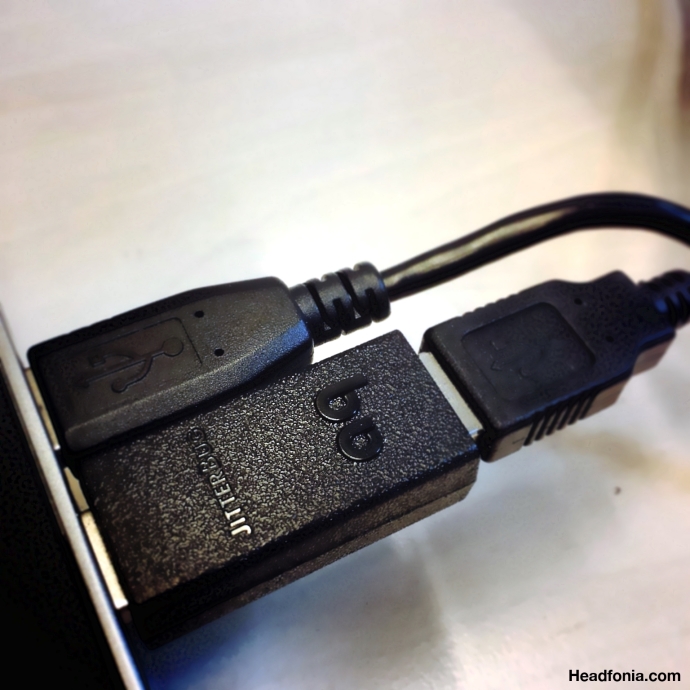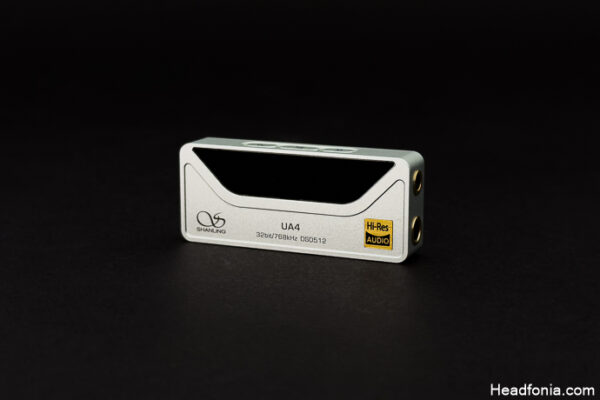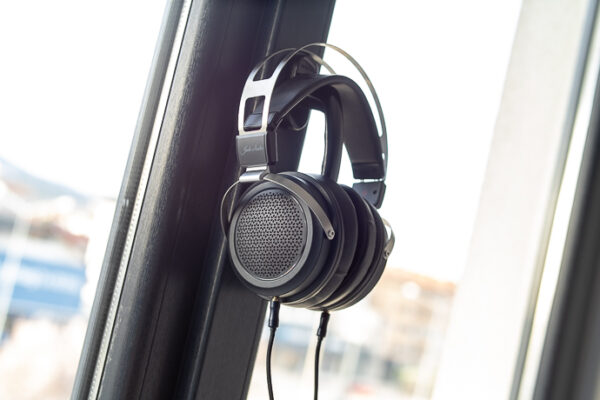Disclaimer: The Jitterbug was sent to me for the purpose of this review. It has to be returned to Audioquest once I’ve finished playing with it and the other AQ units.
AudioQuest
Audioquest is a US based company but the EU headquarters is located in the Netherlands. I had been following Audioquest’s Instagram account for a while and I decided to contact them there after seeing the Jitterbug in one of their posts. AudioQuest is mostly known for their cables since the 1980’s already but they have also released a very popular mini USB DAC/AMP called the Dragonfly. The Dragonfly has gotten a lot of praise all over the world and it will be reviewed soon on Headfonia as well. I can tell you already it pleasantly surprised me. Audioquest “recently” also launched their first full sized headphone called the “Nighthawk”, which will also be featured on HFN in the coming weeks. I first received the Nighthawk and the Jitterbug while the Dragonfly 1.2 arrived quite a while later as AQ can’t keep up with production of the units.
In this review I will only look at the Audioquest Jitterbug, the other units will all be featured separately.
Jitterbug
According to Audioquest the Jitterbug is a USB Data & Power Noise Filter with Dual Discrete Noise-Dissipation Circuits
- Reduces the noise and ringing that plague both the data and power lines of USB ports
- Measurably reduces jitter and packet errors
- Improves dynamic contrast, warmth and resolution
The Problem: All computing devices—laptops, smartphones, Network Attached Storage devices (NAS drives), media servers, etc.—inherently generate a significant amount of noise and parasitic resonances. Additionally, computers contribute a considerable amount of RFI and EMI pollution onto the signal paths—all of which can easily find its way onto your USB cables and into your audio system. This noise and interference has many negative effects. Noise-compromised digital circuitry increases jitter and packet errors, resulting in distortion that causes a comparatively flat and irritating sound. Noise-compromised analog circuitry also damages the sound’s depth,
warmth and resolution.
The Solution: JitterBug’s dual-circuitry measurably reduces unwanted noise currents and parasitic resonances. It also reduces jitter and packet errors (in some cases, packet errors are completely eliminated). JitterBug’s dual-function line-conditioning circuitry works on both the data (communication) and vbus (power) lines of USB ports: The latter reduces noise and prevents EMI and RFI from contaminating the associated digital-to-analog converter (DAC) and/or cable. The former minimizes parasitic resonances created by the computer and USB bus, and is optimized to remove noise above the USB 2.0 frequency specification, making it ideal for audio playback.
The Result: Clearer and more compelling sound, music, dialog, etc. A better audio experience.
A $49USD device that gives you a better audio experience? That of course deserves a closer look!
The Jitterbug (JB) is plug and play and it is supposed to work with most USB devices and DACs. You are supposed to put it on the sending end of your USB connection as JitterBug is a passive device. That also means there are no active circuits or logic systems and as a result you don’t need to install any drivers. Do note the Jitterbug only works on USB 2.0 and it will convert a 3.0 to a 2.0 port. When I’m not listening to vinyl on my Pro-Ject turntable, I almost exclusively use my laptop as a source at home. In theory the Jitterbug is supposed to work best with USB powered DACs such as the new Fiio Q1, the Fiio E10K, the Audioquest Dragonfly, the Resonessence HERUS and a whole lot more. (but it also works for non usb powered dacs)
The first unit I “connected” the JB to was the Chord Hugo, and it in the beginning wasn’t recognizing the JB at all. AQ gave some tips on how to get it working and after reinstalling some drivers, the Hugo + JB combo worked flawlessly. On to another of my favorite USB powered DACs then: the HERUS. Unfortunately I got a “USB device not recognized” error. We haven’t quite figured out yet why this is happening but I have read of other users having the same problem with the Herus. Most likely it’s the Herus that isn’t compatible. After that the JB worked with all of my DACs. All of the Fiio DACs get recognized, just like the brand new Stoner Acoustics EGD (review to come), ALO’s Continental Dual Mono and Violectric’s new V850 DAC (both self-powered). Sometimes the Jitterbug goes all crazy and it will deform your sound completely but a quick unplug solves that immediately.
It all continues on Page 2, right after the click here or below








dalethorn
That’s interesting – the design is supposed to only remove noise and not data, yet you clearly hear it removing data. Hmmm…
Peter Gabriel
It does not remove data, one of the characteristics of noise in a digital signal path, is a brighter sound (which many mistake for more detail), so in fact it actually proves the Jitterbug’s efficiency when the reviewer states that it smooths out the top end. Whether you like those changes or not is off course a compleyely different story.
Alexandre Nishikawa
How about the Schiit Wyrd? From what I’ve understood they are supposed to do the same thing…
dalethorn
There’s a lot of these now, probably some of them aren’t even designed to do anything real. The JitterBug’s performance can’t be predicted because it’s dependent on each system – the kind of junk running across the connections. Mine makes a very subtle improvement with my Mac, but is even better between iPhone6 and my Oppo HA-2.
Dave Ulrich
They Wyrd is a powered USB port, which isn’t the same thing, although its goals are.
Clarence
I don’t here any improvement at all with the Hugo,
dalethorn
That’s good to hear.
Headfonia_L.
funny
Headfonia_L.
At least it works with your Hugo, we still have to figure out how to make mine work
dalethorn
I don’t know if it would help, but while I didn’t have any blank-outs, plugging two into my PC at one time caused glitches. I thought it was supposed to be purely passive, but there’s something strange going on in there, drawing a little power from the USB, and acting unpredictably. So maybe if you get it connected with the other devices, the haze will clear up.
mentt
With Hugo/jitterbug I can confirm improvement.
More clarity, blacker background, better soundstage, calmer highs. On windows
it had dropouts, but on Linux working fine. I have reinstall windows and it
works on windows fine too(same PC)…
Headfonia_L.
We got the Hugo working as well but sonically there’s nothing on my end
dalethorn
I think the nature of what it does (or doesn’t do) is that it can’t be predicted, because each system is different.
ProDigit
From what I gather, without reading the article, the JB is nothing but a capacitor, getting rid of some voltage spikes and dips on the power lines (not data) of usb 2.0 ports, of the cheaper laptops using bad or cheap voltage regulators.
USB2 devices running from usb3.0 ports don’t need this, as the voltage regulators are updated on these ports, and provide upto 5x the power of USB2.0.
I once had a laptop where the mic buzzed so loud (40dB of noise was generated), leaving only 50% of its dynamic range for recording. such a device would benefit this cap.
dalethorn
Good suggestion possibly, but won’t take care of every issue. The JitterBug isn’t “just a capacitor”, but it is proprietary, so maybe tear one apart and have a look. Myself, I wouldn’t dream of soldering anything to a USB port, and $50 for whatever the JitterBug is, is far cheaper than my time diddling with solder and potentially wrecking a USB port. But maybe some of the solder gurus who read here can offer more suggestions.
ProDigit
You can’t harm the laptop soldering a cap in between the USB port power leads, for as long as:
1- the voltage is correct
2- the correct wires are connected to the correct pins,
3- the right cap size is used. Any cap will do, but if they are too small they might not make any difference at all.
Again, not necessary on modern laptops or pcs, as they already have this built in their motherboards, and have good voltage regulators.
dalethorn
So if the JitterBug makes a positive difference on my 2015 Macbook 12 inch (USB 3), then it’s a good deal, yes?
Exh1l3d_0n3
I wonder if going to an external USB powered hub would do much of the same thing, as well as provide more USB ports. It seemed to work that way for me with my JDS Labs Element.
KT
I tried the Fiio Q1 + Jitterbug system on my Windows 10 Lenovo computer, it appeared to be an UNKNOWN device, while Fiio Q1 alone worked quite well, any suggestion to tackle this?
Glenn
Hi im using a standard pc with 3 usb busses and an rme uc soundcard using spdif to my amplifier.. Got 4 jitterbugs from my girlfriend 1 in my router 1 to the soundcard 1 to my usb hdd and 1 between my usb keyboard and mouse. All buses have 1 jb installed. Now im using jriver as my library and jplay mini as my music player. On startup im using fidelizer pro in pure mode and audio player without a network setup. Then on reboot i physically disconnect my network cable wich makes a huge difference (unfortunately now i cannot use jplay streamer which sounds even better on its own). Also do not forget to disable other non used devices in your setup like a secondairy soundcard or firewire device or whatever… When all this is done and jplay mini starts the selected song.. I really hear almost all plusses of the good solid lp sound without all the negatives a lp gives. For me this setup is just about perfect and not real expensive at all… For me the jitterbug makes a huge difference. It just adds so much more warmth in the music and more low mid detail i certainly wont remove them ever again. For my ears this is the best sound ive ever heard so far and ive heard a lot up to more then 10000 euro even then still having far to bright digital glare ish sound!!!… (anxious to see how it works with the m2tech hiface evo 2 as im now saving for this 2500euro soundcard set). I will never understand why all high end systems are setup to all sound so unnatural bright (especially with those crazy silver airy cables) as in the end most music lovers want solid sound???
dale thorn
That’s a good question. When the brightness goes up, people hear more detail, or they think so anyway.. But learning the right balance is the key to the best enjoyment of the music.